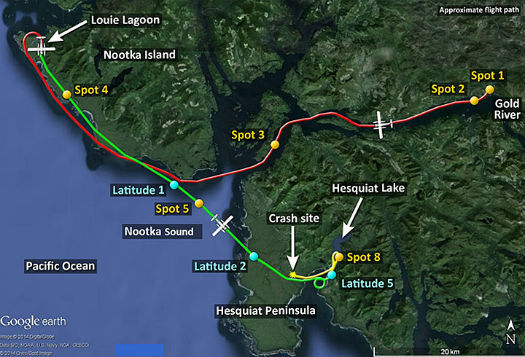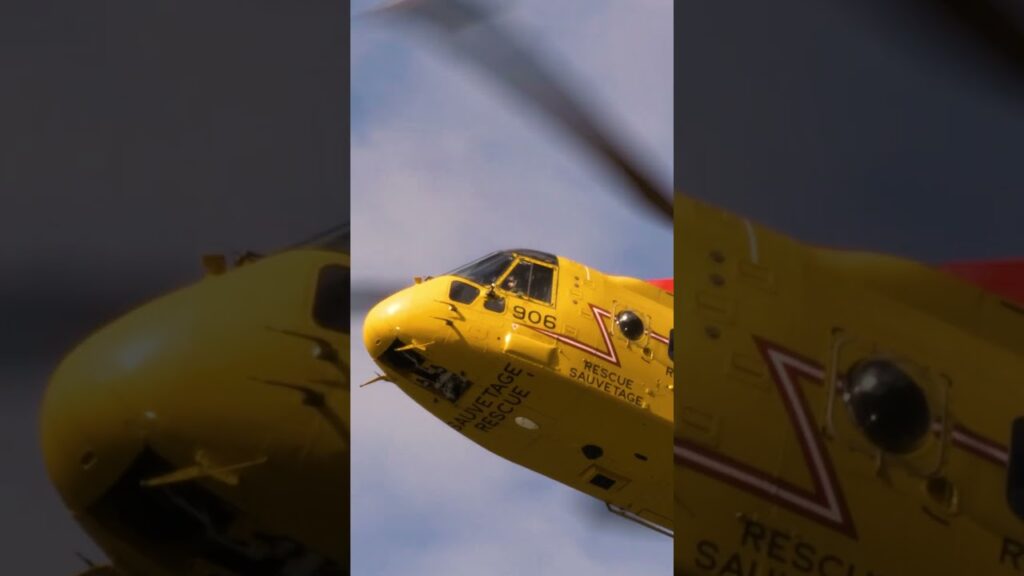
A map shows the route of the float plane’s flight. Google Earth Image with TSB annotations
The Transportation Safety Board of Canada has released its investigation report (A13P0166) into the crash of an air taxi near Hesquiat Lake, B.C. The float plane, with six on board, crashed shortly after take-off. Everyone aboard survived the crash; however, the pilot and one passenger died when they were unable to exit the aircraft before it was consumed by flames in a post-crash fire.
At 1015 Pacific Daylight Time, a de Havilland Beaver floatplane, operated by Air Nootka Ltd., left Hesquiat Lake for Air Nootka Ltd.’s water aerodrome base near Gold River, B.C. with a pilot and five passengers on board. Visibility at Hesquiat Lake was about 2 ½ nautical miles in rain and the cloud ceiling was about 400 feet above lake and sea level. Approximately three nautical miles west of the lake, while over Hesquiat Peninsula, the aircraft struck a tree top at about 800 feet above sea level and crashed. Shortly after the aircraft came to rest, the fire started.
The accident investigation identified flight at low level in poor weather as causal. It also found that Air Nootka did not have effective methods to monitor its pilots’ in-flight decision-making and associated practices. As a result, Air Nootka had no way to detect and correct unsafe behaviour or poor decision making. Further, the investigation found that risks still persist in the area of post-crash survivability. The lack of a requirement for shoulder harnesses on all passenger seats, the lack of technology to reduce fuel leakage or to eliminate ignition sources, and the lack of alternate means of escape such as push-out windows, all increase the risk of tragic results in the event of a crash. These issues have all been highlighted in previous TSB accident investigations.
In November of 2014, the TSB announced that it would conduct a Safety Issues Investigation into Canadian air taxi operations to understand the risks that persist in this important sector of the aviation industry. The study will engage industry, the regulator and other stakeholders to gain a full understanding of the issues affecting air taxi operations. The Board may make recommendations to address any identified systemic deficiencies.


